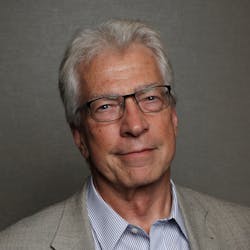
Whether you surrendered control of your TV to "The Outer Limits" or voyaged to the final frontier with "Star Trek," space has held a vivid grip on our imaginations—and spectroscopy has been along for the ride. A decade after these television shows first aired in the mid-1960s, Voyager 1 was launched with infrared and ultraviolet spectrometers on board. Thirty-five years later the UV spectrometer is still functioning as the spacecraft heads out beyond the solar system.
As senior editor Gail Overton writes in our cover story, such planetary and deep-space applications of spectroscopy have demanded rugged designs to survive the environment and capture the data. The resulting spectrometers have been delivering invaluable information that ranges from the makeup of heavenly bodies to the performance of optical materials, sensors, and electronics in space (see page 36).
Highly scalable
Photonics has also been exploring the microcosm and three articles in the issue illustrate the technologies available to explorers at this end of the scale. Aydogan Ozcan and his colleagues at UCLA describe their work to develop a lens-free, on-chip microscope that should find many uses in field applications (see page 59). Christopher Cotton at ASE Optics shows how creative thinking about optical system design can improve the capture of fluorescence light in a commercial microscopy system used for microbiology testing at pharmaceutical manufacturing (see page 47). And contributing editor Jeff Hecht writes about developments now leading to digital holographic microscopes that can display 3D images of living cells in real time (see page 53).
Whatever the scale, photonics clearly continues to enhance existing applications while enabling new ones.
About the Author

Conard Holton
Conard Holton has 25 years of science and technology editing and writing experience. He was formerly a staff member and consultant for government agencies such as the New York State Energy Research and Development Authority and the International Atomic Energy Agency, and engineering companies such as Bechtel. He joined Laser Focus World in 1997 as senior editor, becoming editor in chief of WDM Solutions, which he founded in 1999. In 2003 he joined Vision Systems Design as editor in chief, while continuing as contributing editor at Laser Focus World. Conard became editor in chief of Laser Focus World in August 2011, a role in which he served through August 2018. He then served as Editor at Large for Laser Focus World and Co-Chair of the Lasers & Photonics Marketplace Seminar from August 2018 through January 2022. He received his B.A. from the University of Pennsylvania, with additional studies at the Colorado School of Mines and Medill School of Journalism at Northwestern University.